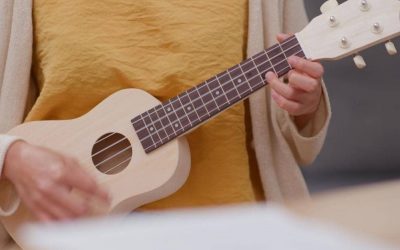The harmonica is a timeless instrument that many people continue to play both as a hobby and professionally. The harmonica is fun to play, easy to carry around, and can play just about any tune.
If you’re interested in learning how to play, you may be wondering just how long it may take to get the hang of it. This all depends on a variety of things, so keep reading to find out just how long it will take you to learn how to play the harmonica.
Five Tips to Learn Harmonica More Quickly
The good news is, the harmonica is a pretty easy instrument to learn how to play and anyone whether young or old can pick it up fairly quickly. Just how quickly however, depends on you and your dedication to the instrument. For the most part, however, learning to play the harmonica takes about three to six months, although your process might take a bit longer if you plan on learning more skills than just the basics.
If you’re in a rush to learn how to play and you can’t wait to show off your impressive skills, there are a few tips and tricks that you can pick up to speed up the process and become an expert in no time at all.
1. Practice Makes Perfect
This goes without saying, but practicing as often as possible is a surefire way to learn the harmonica as quickly as possible. The amount of dedication you have for your harmonica will show in your skills.
Spending at least 30 minutes a day practicing will ensure that you are playing like a pro after six months, at least when it comes to the basics of the harmonica. Spend more time practicing and you will be able to cut that time in half or pick up even more difficult skills along the way.
Another thing to consider is consistency. Spend 30 minutes at each practice every day, not every other day or once a week. If you are inconsistent with your practices, you won’t be retaining anything at all and you’ll have to start over from the beginning each time you practice. The more time you dedicate to practicing, the better you’ll become.
2. Use Learning Materials
You can’t learn to play the harmonica without a proper guide showing you how to do it. You can find dozens of books on how to play the harmonica in the library or at a bookstore that will be helpful when you’re getting started.
The good thing about using books is that you won’t need an Internet connection to use them, and you can take them pretty much anywhere you go. You can also make notes in them and jot down anything that you might find interesting. Many of these books also include songs you can practice with.
3. YouTube
If you’re not too keen on using books to learn, you can always turn to the Internet — more specifically, YouTube. You can find all kinds of videos on YouTube that can help you learn to play the harmonica, including free classes.
If you’re looking for some inspiration, you’ll also be able to find it there. Dozens of talented musicians can be found showing off their skills on YouTube, giving you the motivation you may need to keep up with your lessons. Best of all, you can discover songs that you may want to learn to play on your harmonica.
4. Take Lessons
This is yet another no-brainer, but it’s still worth mentioning. There is no better way to learn how to play the harmonica than with a professional guiding you every step of the way. They can teach you at your pace and can answer any of your questions as needed. You can take group lessons or opt out for one-on-one classes.
The best part is that you can take classes either online or in person, meaning that there are classes out there for everyone, no matter what your schedule or where you live. As mentioned previously, you may even be able to find online classes on YouTube free of charge.
5. Study up on the Lingo
If you have ever played an instrument before, you know that there are dozens of terms and lingo that are used that may not make any sense to anyone other than those that play that particular instrument. The same goes for the harmonica.
There are certain terms that you must learn in order to play the harmonica successfully, so be sure to read up on those before you get started. Otherwise, you will be left having to stop every second to look up a particular term when you’re not familiar, thus wasting precious time.
Conclusion
Learning how to play any instrument is certainly a challenge, but one worth taking. The harmonica, in particular, is one of the easier instruments to learn how to play, but this doesn’t necessarily mean that it doesn’t require any work. You’ll certainly have to put in as much time as possible in order to get the hang of it.
An important thing to remember is to have perseverance and to keep going even when the going gets tough. After all, anything worthwhile takes time and a lot of work, so keep this in mind when you are picking up the harmonica for the first time.




